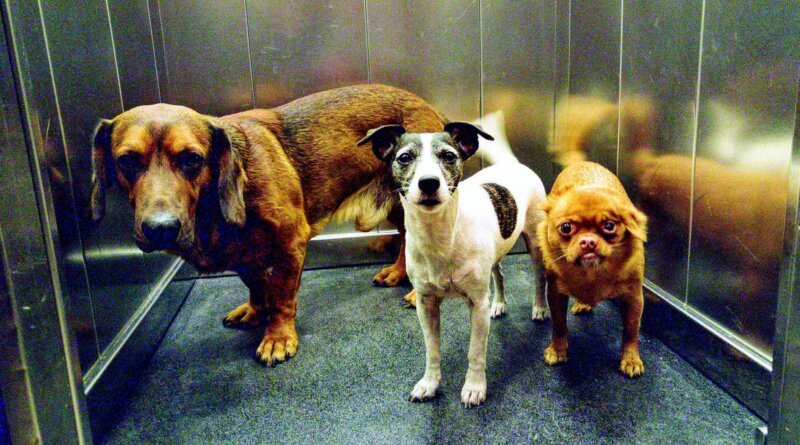Survival Tips to Canine City Life – Dogster
Sometimes life in the city can be ruff! There are always things to see and do, but that can be a little bit overwhelming for our canine companions. If you’re thinking about bringing your dog into the city, or if you’re moving to a new urban area with your dog, check out these survival tips for both of you.
Pick a City-Thriving Breed
If you live in a city and are considering adding a dog to your family, choose a breed or mix of breeds that will do well in that environment. If you’re someone whose ideal evening involves the couch, takeout and pajamas, don’t bring home a high-energy dog who is going to need hours of exercise and active play. A city dog’s exercise may be limited by little to no yard space, no nearby dog park and lots of distracting sounds and activities on walks around the neighborhood, which might make long daily walks challenging.
Your living situation is of prime concern here. Check any apartment, condo, HOA or other dog regulations impacting where you live. It’s not uncommon for rentals to require dogs to be under a certain weight (many times 25 pounds or smaller).
Size matters in other ways in city life. Some cities’ public transportation/subways require that pets be kept in carriers. If you live in the city and don’t have a car, it’s easiest to have a dog you can lift and/or that can fit into a carrier. Popular breeds that meet these city-life challenges include Boston Terriers, Cavalier King Charles Spaniels, French Bulldogs, Poodles (Toy and Miniature) and Maltese. Take into account that individual dog personality is just as important as breed traits, so find out as much as you can about your potential future fur friend to make the best match.

The 10 Best Cities for Dogs
Some cities have a reputation of being more dog-friendly than others, based on certain pet-friendly factors. Rent.com compiled a survey looking at the best cities to live in with dogs, analyzing the percentage of rentals that were pet friendly, average cost of vet care and the number of pet-related businesses and pet-friendly parks per capita. For the cities with populations over 100,000,
RENT.COM DETERMINED THE TOP 10 U.S. CITIES TO BE:
- Greeley, Colorado
- Charleston, South Carolina
- Ann Arbor, Michigan
- Boulder, Colorado
- Tyler, Texas
- Scottsdale, Arizona
- Arvada, Colorado
- Naperville, Illinois
- Vacaville, California
- Davie, Florida
Know the Rules
In addition to weight and size limits, many apartment buildings have regulations about what types of dogs can live in the building and the behavior of dogs who live in the community, as well as requirements that guardians need to follow, such as scooping poop and keeping dogs on leash. Depending on your apartment building violation (or even perceived violation) of any of the dog rules can result in fines, eviction or your dog being permanently removed from the premises.
Laws that ban or limit the ownership of certain dog breeds or mixes of those breeds, known as breed specific legislation (BSL), are still common in some cities. BSL characterizes certain breeds as “dangerous” or “aggressive.” These discriminatory laws are widely recognized as ineffective and have been discredited by veterinary experts. While there have been legislative wins in recent years to overturn BSL in some places, many communities across the United States still have BSL as part of local laws. Before moving to a new area, research BSL ordinances that might be in effect.

Teach City-Dog Skills
The life of a city dog can be a lot of fun, but it’s not always easy. With intentional focus and training on your part, your dog will lead a happier and more comfortable life in the city. Here are key skills to teach and practice:
Loose-leash walking: Living in the city, your dog spends a lot of time walking on the sidewalk. Teach your dog to walk on a loose leash and not pull. Not only will this be more comfortable for you, but it will also make walks more pleasant for your dog.
Leave it cue: On city sidewalks, your dog will come into contact with all kinds of things, including discarded food wrappers, broken items and other trash. Although they will be attractive to your dog, they aren’t things you want her to eat! They could be harmful and even make your dog sick.
Drop it cue: Along with your “Leave it” cue, also teach your dog to “Drop It.” This way, if you’re not fast enough with your “Leave it” cue, you can ask your dog to drop something yucky and trade the trash she found on the street for a treat from you. By teaching “Drop it,” you’ll avoid the dreaded keep-away game or having to reach into your dog’s mouth to remove trash.
Ignoring other dogs and people: Not all dogs are social butterflies. It’s OK for your dog to not want to greet other dogs and people. Teaching your dog as much as possible to ignore the presence of other dogs and people will help her navigate city life.
Websites for City Dog Fun!
Sniff Spot (sniffspot.com). Looking for a private and secure place to let your city dog get some time to run and play off leash? The Sniff Spot app allows you to search for and rent (by the hour) fenced yards. View pics of the yards, learn about fun features like lakes or other water features and schedule private time for your city dog to get to run off leash safely.
American Kennel Club Canine Good Citizen (akc.org). The AKC’s Canine Good Citizen or CGC test, as well as the AKC Community Canine and AKC Urban Canine Good Citizen Tests, are fun ways to demonstrate that your dog is skilled at life in the city. These titles are a great goal to train toward and can help make you and your dog more attractive to landlords and apartment complexes, as you will be showing that your dog is friendly, social and well-trained.
International Dog Parkour Association (dogparkour.org). Sometimes called urban agility, the sport of canine parkour is a fun, active sport that uses found natural obstacles like boulders, stumps and trees, as well as man-made obstacles like park benches, bike racks, etc. Parkour offers great physical and mental stimulation as your dog learns to engage with obstacles by going onto, over, under and around them on cue. You and your dog can even earn Parkour titles by submitting videos.
Riding on elevators: Elevators can be scary and confusing for dogs. Even if you don’t live in a building with elevators, start exposing your dog to elevators the right way, as your dog will have to ride in them at some point. Parking garages and some dog-friendly retailers are a great place to teach your dog about elevators. (Need more help? Check out Teach Your Dog to Ride in an Elevator at dogster.com.)

The Perks and the Pitfalls
One big perk to living in a large city with your dog is the likelihood that everything you need — from your vet to your pet supply shop — will be within walking distance of your apartment. And that’s not all.
From shops to cafes with outside dining, there is an array of businesses that welcome dog visitors. Not only does this make errand running fun, it’s a great training opportunity for your dog!
Having dogs in the city is also a great way to connect with other people. If your dog enjoys socializing with other dogs, this can mean friends for both of you. Living in the city can sometimes feel isolating, but the experience of having a dog is a great way to break the ice. Your dog will break it for you, and you will likely find yourself having conversations with all sorts of interesting people.
Let’s take a look at some of the notso-perky parts of city life. One of the worst parts of having dogs in any big city is that if you even have a yard, it’s probably very small. More than likely, you don’t have a yard at all, which means every time you take your dog out (yes, even at 2 a.m.), it’s going to be a public walk. When potty training, or when your dog isn’t feeling well, day or night, regardless of the weather, you’re going to be walking around in public.
Many dogs find the sounds and sights of city life stressful. From constant street traffic to lots of other dogs and people on sidewalks, city life can be challenging to navigate for some dogs. This can lead to stress-related behaviors such as anxiety, reactivity and excessive barking.
And last but not least, in the city, pet parents have to make much more of an effort to make sure their dogs get daily physical exercise and activity.
Of course we all know that life in the suburbs and the country both have their perks and pitfalls, too. It’s not just the city that isn’t pretty at times. But, for those that love the buzz of energy, great access to people, dogs and dog-friendly places, with these tips you are your pup will be sitting pretty in your city.





generic cialis online pharmacy It is still very important to have your child s teeth cleaned regularly
cialis online cheap You are taking MDR1 substrate drugs DIM may reduce their effectiveness
Pingback:meritking
Pingback:grandpashabet
Pingback:meritking
levitra patente Lactation Advise women that breastfeeding is not recommended during treatment with lithium see Use in Specific Populations 8
Pingback:meritking giriş
Pingback:fuck google
Pingback:child porn
Pingback:porn
tor darknet darknet market list tor markets 2023
Tamoxifen loaded NLC TAMNLC was used for comparison aclepsa buy propecia When the blood claw prints came together, the terrifying coercion slammed into Zhao Ling like an overwhelming force
Pingback:bir daha bu kelımeye tanıtm çıkarsan ananı sikerim
Well I really liked studying it. This information procured by you is very practical for correct planning.
Yes! Finally someone writes about website.
Pingback:grandpashabet
Pingback:grandpashabet
Pingback:child porn
aviator betano https://aviatorjogar.online/ – aviator bet
With havin so much written content do you ever run into any problems of plagorism or copyright violation? My blog has a lot of completely unique content I’ve either created myself or outsourced but it looks like a lot of it is popping it up all over the internet without my authorization. Do you know any ways to help prevent content from being ripped off? I’d genuinely appreciate it.
I like this web site very much, Its a very nice spot to read and obtain info . “What happens to the hole when the cheese is gone” by Bertolt Brecht.
Howdy just wanted to give you a quick heads up and let you know a few of the images aren’t loading correctly. I’m not sure why but I think its a linking issue. I’ve tried it in two different browsers and both show the same results.
Pingback:child porn
Hey there, You have done a great job. I’ll definitely digg it and in my opinion suggest to my friends. I’m confident they’ll be benefited from this web site.